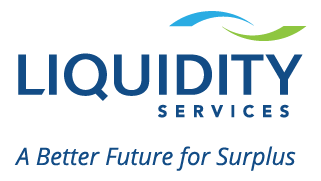
When it comes to budgeting your expenses for the next year, many operations managers start with the direct labor and material costs. That is, how much it costs to purchase product supplies, as well as how long and how much it costs to pay people to make them. But, what about factory overhead costs – all the incidental expenses that surround production?
This article, then, will be a down-and-dirty quick reference cheat sheet for manufacturing operations to get a ballpark figure of their factory costs. But first: What do we mean when we say “factory overhead”?
What Is Factory Overhead?
“Factory overhead” is how much it costs to produce a company’s products, not the labor and materials it takes to directly create the widget.
It’s also called manufacturing overhead, factory burden, and production overhead.
What Do Factory Overhead Costs Include?
By our definition, factory overhead for, say, a plant making highway signs would include the salary of the engineer who maintains factory lines, the cost of electricity to power the plant, and replacement part expenses.
More specifically, factory overhead includes:
- Depreciation of equipment and factory facilities
- Rent, property taxes, insurance, and utilities
- Employment costs for supervisors, maintenance and quality control staff, and any other on-site employees who aren’t physically making signs
- “Indirect” supplies that keep the factory humming, from lightbulbs to toilet paper
Basically, anything or anyone inside the manufacturing facility that’s not directly making products should be calculated as part of overhead.
What Do Factory Overhead Costs Not Include?
Factory overhead excludes:
- Product materials
- Employee costs of those actively manufacturing the product
- External administrative overhead, such as an outside headquarters or human resources
- C-suite employee costs
- Sales and marketing expenses – including salaries, travel costs, and advertising
By this reasoning, the sign manufacturing facility in our earlier example would not include aluminum or steel cost in its overhead calculation. It also excludes employment costs of the skilled worker who cuts the metal into signs.
Calculating Annual Factory Overhead Costs
Total factory overhead is generally calculated on an annual basis to predict costs of production. Remember that more conservative estimates mean you’ll either reserve enough cash for high bills, or be pleasantly surprised with a surplus.
- For utilities and commercial property insurance, use your previous year’s total annual bill for water, electricity, and gas, then increase by at least 3% to account for inflation. If your factory plans to increase its production, bump up your planned bills.
- For maintenance, estimate that you’ll spend 9-12% of your equipment’s market value for repairs and parts.
- For depreciation, you’ll need how long you think you’ll use the asset – either equipment or facility – as well as the current salvage value and how much the asset itself cost to purchase, set-up, and train for use. That’s territory for accountants, though, as depreciation has tax implications. For now, eyeball your assets. Will you need to replace anything soon? Is the building deteriorating faster than you can fix it? These questions will help you figure out if you’ll need to raise or lower your budget this year.
- For employee costs, start with what you spent last year, and then look at your company’s plans. Will you need to hire more maintenance engineers, for example, or are you downsizing?
- For general supplies, again estimate using your previous year’s expenses, then increase by at least 3% for inflation.
As a ballpark figure, then, we can take last year’s overhead costs and increase anywhere from 3-5% to get this year’s factory overhead projection.
For example, let’s say last year’s sign factory overhead – between incidental employment costs and other expenses – cost $1,500,000. We expect the factory to be as productive as last year, with no extra labor costs or contract changes.
So, an adjusted projection for this year’s factory overhead would be $1,545,000 – or 3% more than last year’s.
Calculating Factory Cost Per Unit
But what does this mean in context of your factory’s actual production?
Once you have your projection, you can then divide overhead by the number of products to get a factory cost per unit. This metric tells you how much you’re spending per widget in production, which influences your company’s profit margin.
Our hypothetical sign factory expects to produce the same number of signs as last year: 20,000. So, we divide $1,545,000 – our expected factory overhead – by 20,000 to get $77.25 in factory cost per sign.
That means our factory can expect to spend almost $80 for every sign it makes.
3 Ways to Reduce Overhead Costs
By looking at all the pieces that make up factory costs, we can start to understand ways to decrease overhead.
- Increase efficiency through equipment upgrades and trained employees. By upgrading older equipment to better new ones, you can produce more for the same amount of resources. Training your employees can also increase their efficiency, giving you better results per person instead of simply hiring more.
- Decrease excess inventory and idle equipment. Storing extra products or mothballed equipment “just in case” costs tens of thousands in factory overhead. Consolidate those areas to both decrease overhead and increase alternative revenue streams.
- Reuse equipment and supplies from other factories. Ask other facilities if they have extra equipment or materials that they’re not using – and if it could be “redeployed” to your factory. Redeployment would save time and money in searching for and installing brand-new equipment while decreasing your overhead costs.
Calculating factory overhead comes down to looking at what you’ve done, what you’re planning to do in the next year, and how you can use current resources in clever ways. Good luck, and remember: If you need help figuring out how you can leverage current assets for your manufacturing plant or business, we can give you a hand.



Comments are closed.